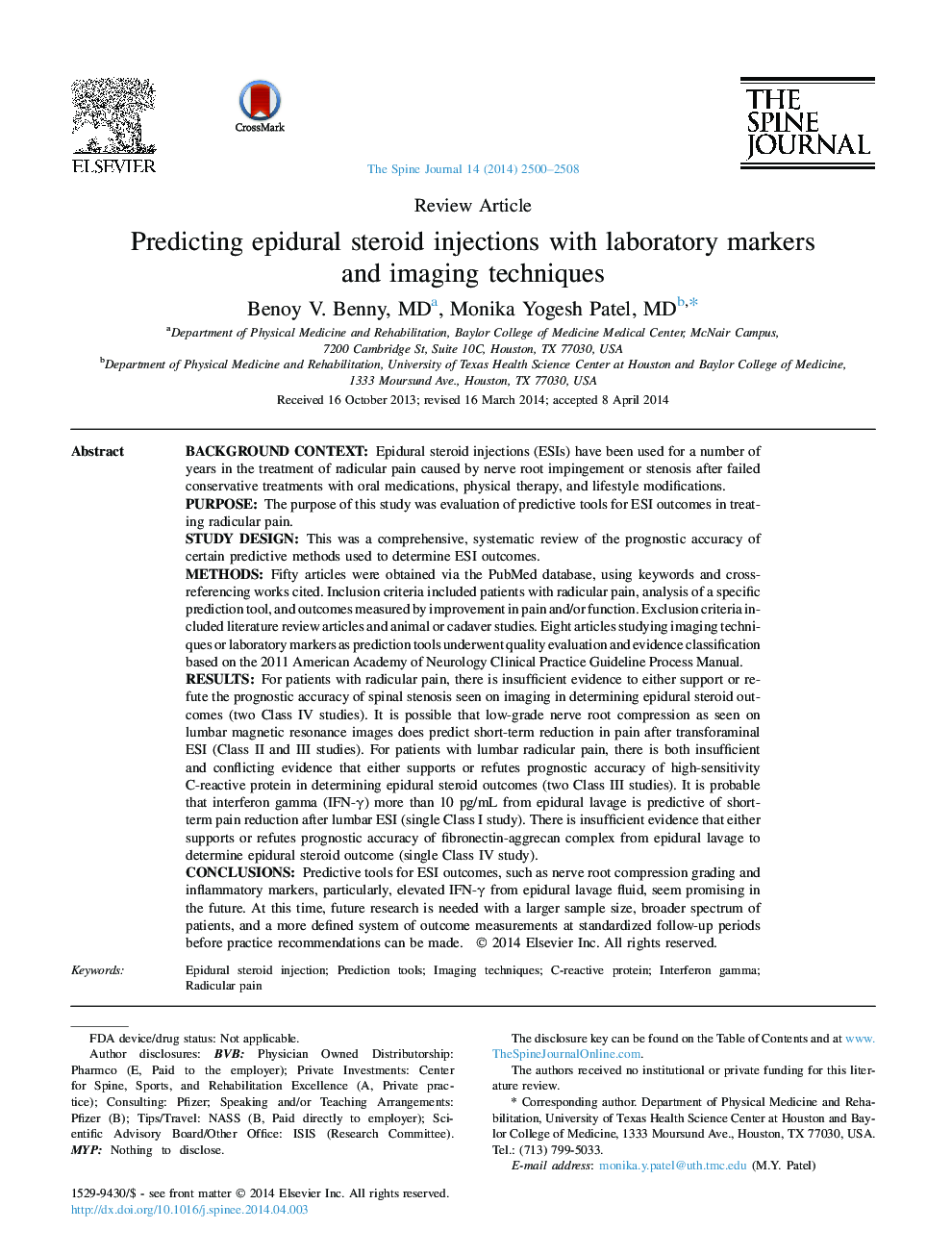| کد مقاله | کد نشریه | سال انتشار | مقاله انگلیسی | نسخه تمام متن |
|---|---|---|---|---|
| 4096767 | 1268570 | 2014 | 9 صفحه PDF | دانلود رایگان |
Background contextEpidural steroid injections (ESIs) have been used for a number of years in the treatment of radicular pain caused by nerve root impingement or stenosis after failed conservative treatments with oral medications, physical therapy, and lifestyle modifications.PurposeThe purpose of this study was evaluation of predictive tools for ESI outcomes in treating radicular pain.Study designThis was a comprehensive, systematic review of the prognostic accuracy of certain predictive methods used to determine ESI outcomes.MethodsFifty articles were obtained via the PubMed database, using keywords and cross-referencing works cited. Inclusion criteria included patients with radicular pain, analysis of a specific prediction tool, and outcomes measured by improvement in pain and/or function. Exclusion criteria included literature review articles and animal or cadaver studies. Eight articles studying imaging techniques or laboratory markers as prediction tools underwent quality evaluation and evidence classification based on the 2011 American Academy of Neurology Clinical Practice Guideline Process Manual.ResultsFor patients with radicular pain, there is insufficient evidence to either support or refute the prognostic accuracy of spinal stenosis seen on imaging in determining epidural steroid outcomes (two Class IV studies). It is possible that low-grade nerve root compression as seen on lumbar magnetic resonance images does predict short-term reduction in pain after transforaminal ESI (Class II and III studies). For patients with lumbar radicular pain, there is both insufficient and conflicting evidence that either supports or refutes prognostic accuracy of high-sensitivity C-reactive protein in determining epidural steroid outcomes (two Class III studies). It is probable that interferon gamma (IFN-γ) more than 10 pg/mL from epidural lavage is predictive of short-term pain reduction after lumbar ESI (single Class I study). There is insufficient evidence that either supports or refutes prognostic accuracy of fibronectin-aggrecan complex from epidural lavage to determine epidural steroid outcome (single Class IV study).ConclusionsPredictive tools for ESI outcomes, such as nerve root compression grading and inflammatory markers, particularly, elevated IFN-γ from epidural lavage fluid, seem promising in the future. At this time, future research is needed with a larger sample size, broader spectrum of patients, and a more defined system of outcome measurements at standardized follow-up periods before practice recommendations can be made.
Journal: The Spine Journal - Volume 14, Issue 10, 1 October 2014, Pages 2500–2508
